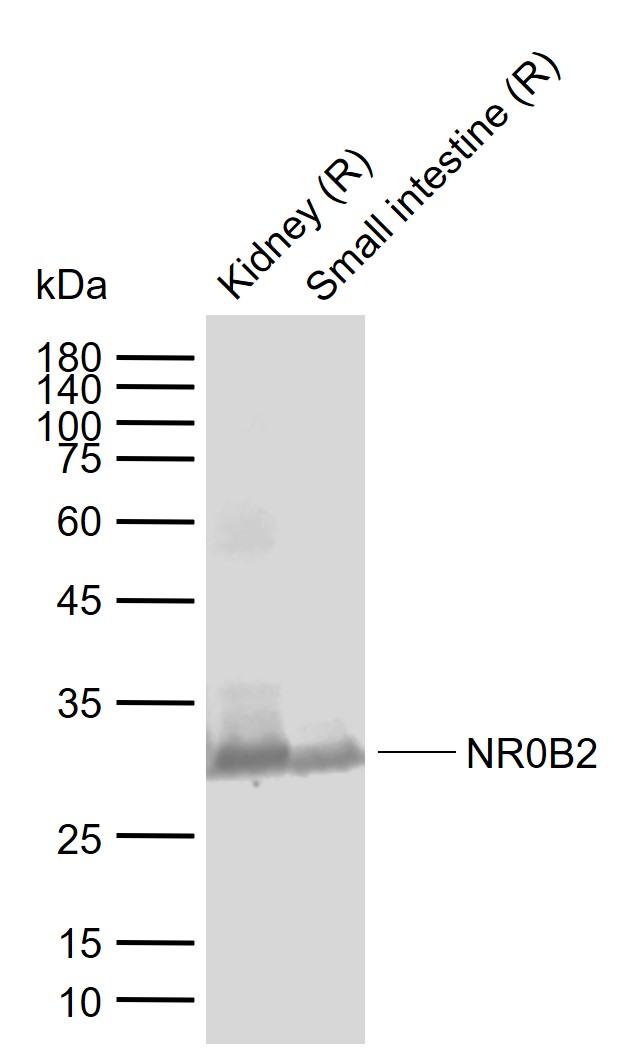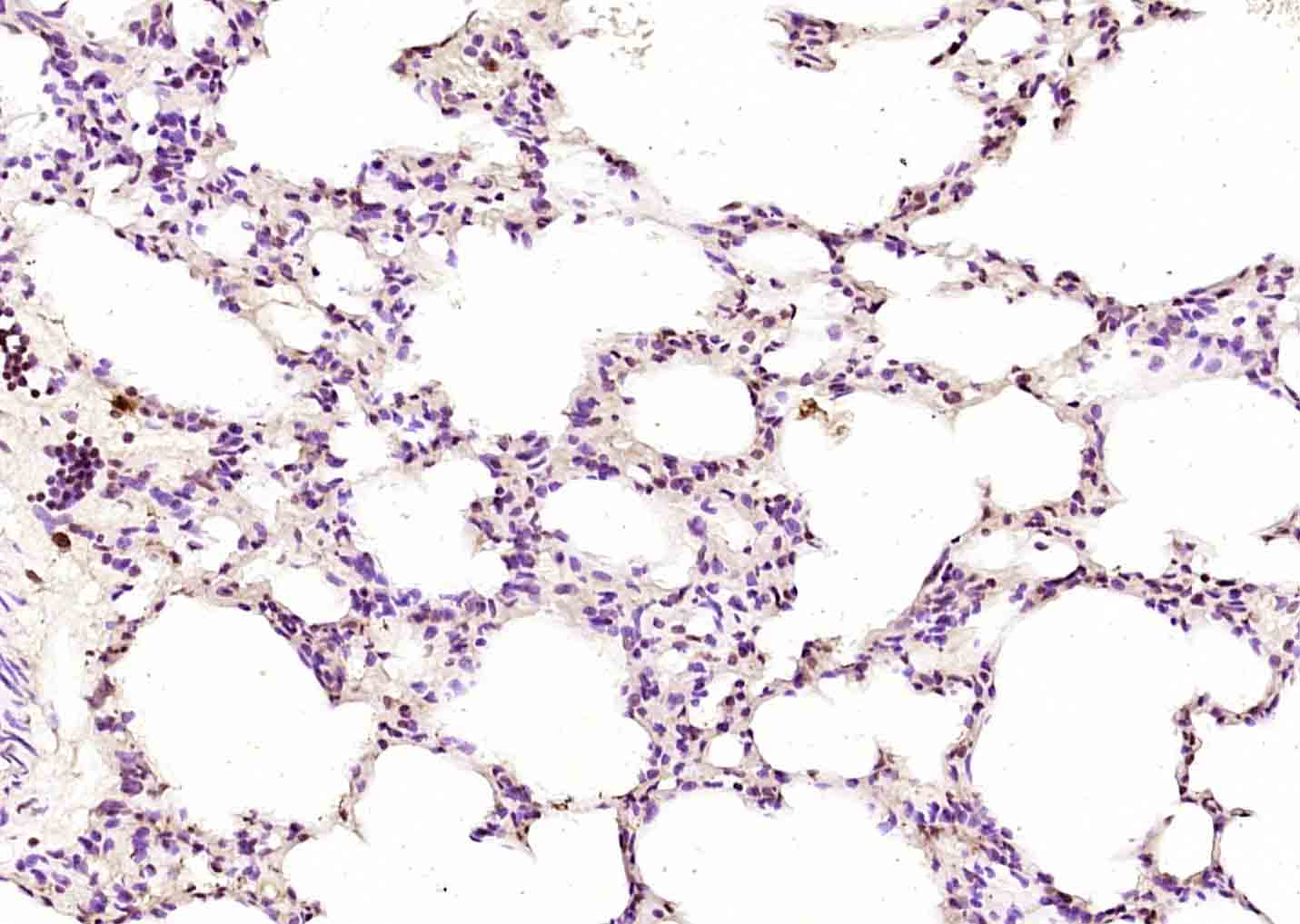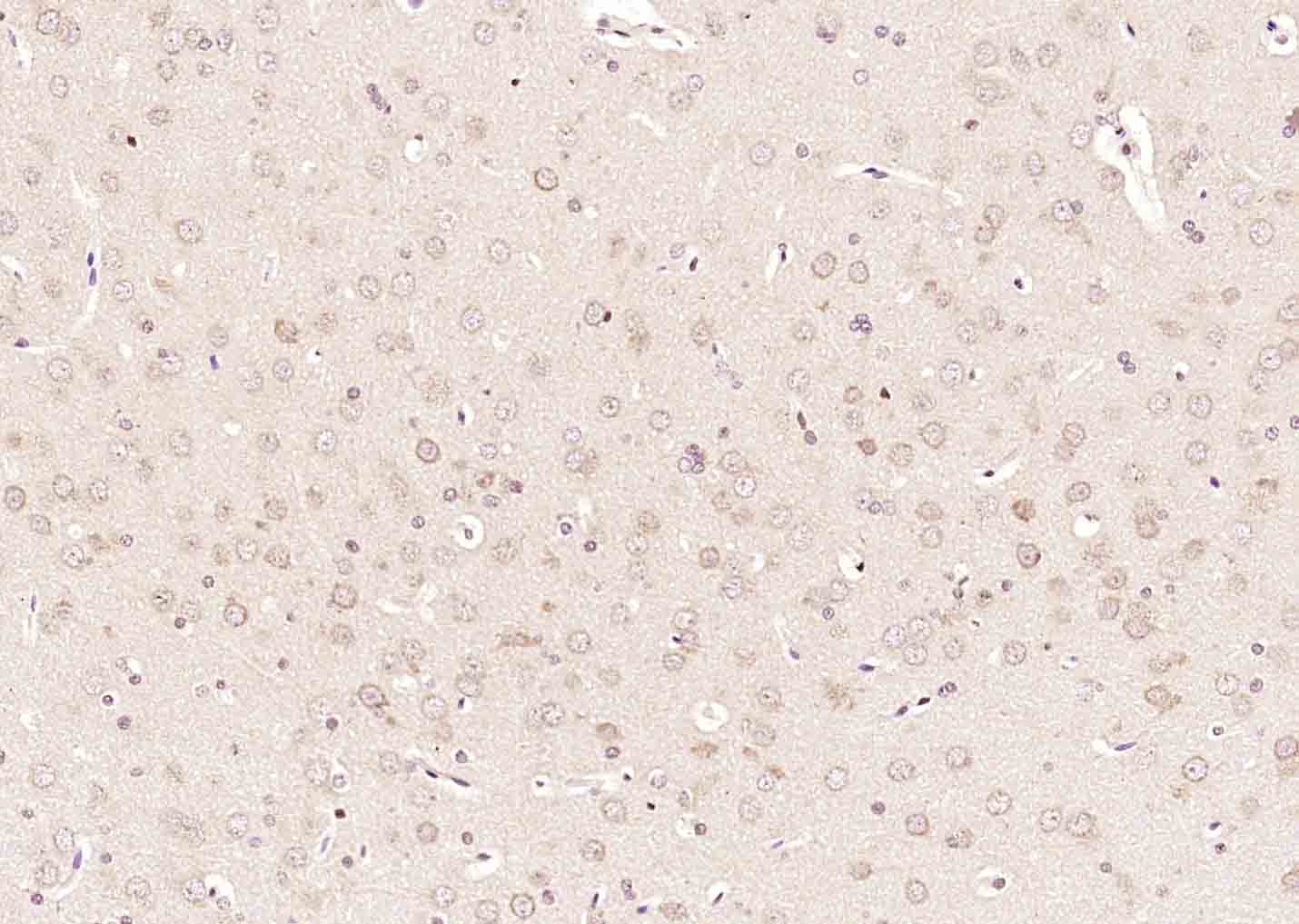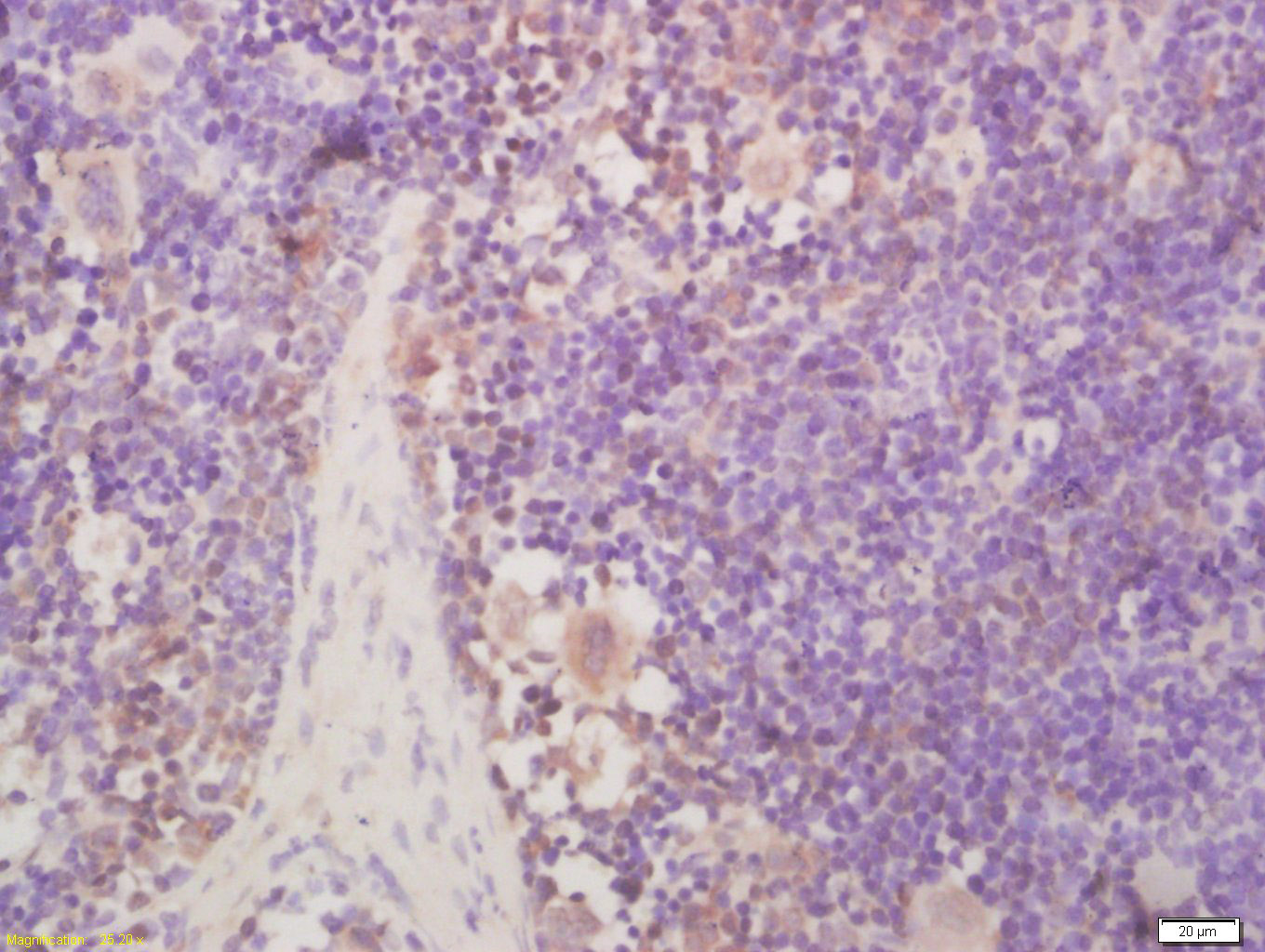
Rabbit Anti-NR0B2 antibody
NR0B2; NR0B2_HUMAN; Nr0b2a; Nuclear receptor subfamily 0 group B member 2; Nuclear receptor subfamily 0, group B, member 2a; Orphan nuclear receptor SHP; SHP; SHP-1; Shp1; Small heterodimer partner.
View History [Clear]
Details
Product Name NR0B2 Chinese Name 核受体0相关蛋白B家族2抗体 Alias NR0B2; NR0B2_HUMAN; Nr0b2a; Nuclear receptor subfamily 0 group B member 2; Nuclear receptor subfamily 0, group B, member 2a; Orphan nuclear receptor SHP; SHP; SHP-1; Shp1; Small heterodimer partner. literatures Research Area Tumour Cell biology Chromatin and nuclear signals Signal transduction transcriptional regulatory factor Epigenetics Immunogen Species Rabbit Clonality Polyclonal React Species Mouse, Rat, (predicted: Human, Dog, Cow, Horse, Rabbit, ) Applications WB=1:500-2000 ELISA=1:5000-10000 IHC-P=1:100-500 IHC-F=1:100-500 ICC=1:100-500 IF=1:100-500 (Paraffin sections need antigen repair)
not yet tested in other applications.
optimal dilutions/concentrations should be determined by the end user.Theoretical molecular weight 28kDa Cellular localization The nucleus cytoplasmic Form Liquid Concentration 1mg/ml immunogen KLH conjugated synthetic peptide derived from human NR0B2: 31-130/257 Lsotype IgG Purification affinity purified by Protein A Buffer Solution 0.01M TBS(pH7.4) with 1% BSA, 0.03% Proclin300 and 50% Glycerol. Storage Shipped at 4℃. Store at -20 °C for one year. Avoid repeated freeze/thaw cycles. Attention This product as supplied is intended for research use only, not for use in human, therapeutic or diagnostic applications. PubMed PubMed Product Detail SHP is an orphan nuclear receptor containing the dimerization and ligand-binding domains found in other nuclear receptors, but lacking the conserved DNA binding domain. SHP is specifically expressed in liver and other tissues, including fetal liver and adrenal gland, as well as adult spleen and small intestine. In addition, SHP is highy expressed in the murine macrophage cell line RAW 264.7 but suppressed by oxLDL and 13-HODE, which is a ligand for PPARg. SHP interacts with nuclear receptors, including thyroid receptor, retinoic acid receptors (RAR and RXR) and estrogen receptors (ERa and ERb). SHP functions as a negative regulator of these receptors by at least three mechanisms: inhibition of DNA binding via dimerization, direct antagonism of coactivator function through competition and possibly transrepression via recruitment of putative corepressors. In oxLDL-treated, resting macrophage cells, SHP acts as a transcription coactivator of NFkB, suggesting that SHP is a modulatory component in the regulation of the transcriptional activities of NFkB. Lastly, negative feedback regulation of a hepatic bile acid transporter, NTCP, is controlled by bile acid-activated FXR via induction of SHP to protect the hepatocyte from bile acid-mediated damage in cholestatic conditions.
Function:
Acts as a negative regulator of receptor-dependent signaling pathways. Specifically inhibits transactivation of the nuclear receptor with whom it interacts.
Subunit:
Interacts with RARA, RXRA, THRB, NR5A1, NR5A2, NR1I3, PPARA, PPARG and EID1. May also interact with HNF4A (By similarity). Heterodimer; efficient DNA binding requires dimerization with another bHLH protein. Interacts (via N-terminus) with NEUROD1 (via N-terminus an C-terminus). Interacts with ID2.
Subcellular Location:
Nucleus. Cytoplasm. Note=Colocalizes with NEUROD1 in the nucleus.
Tissue Specificity:
Liver. Low levels of expression were detected in heart and pancreas.
DISEASE:
Defects in NR0B2 may be associated with obesity (OBESITY) [MIM:601665]. It is a condition characterized by an increase of body weight beyond the limitation of skeletal and physical requirements, as the result of excessive accumulation of body fat.
Similarity:
Belongs to the nuclear hormone receptor family. NR0 subfamily.
SWISS:
Q15466
Gene ID:
8431
Database links:Entrez Gene: 8431 Human
Omim: 604630 Human
SwissProt: Q15466 Human
Unigene: 427055 Human
Product Picture
Lane 1: Rat Kidney tissue lysates
Lane 2: Rat Small intestine tissue lysates
Primary: Anti-NR0B2 (SL4311R) at 1/1000 dilution
Secondary: IRDye800CW Goat Anti-Rabbit IgG at 1/20000 dilution
Predicted band size: 28 kDa
Observed band size: 28 kDa
Paraformaldehyde-fixed, paraffin embedded (rat lung); Antigen retrieval by boiling in sodium citrate buffer (pH6.0) for 15min; Block endogenous peroxidase by 3% hydrogen peroxide for 20 minutes; Blocking buffer (normal goat serum) at 37°C for 30min; Antibody incubation with (NR0B2) Polyclonal Antibody, Unconjugated (SL4311R) at 1:200 overnight at 4°C, followed by operating according to SP Kit(Rabbit) (sp-0023) instructionsand DAB staining.Paraformaldehyde-fixed, paraffin embedded (rat brain); Antigen retrieval by boiling in sodium citrate buffer (pH6.0) for 15min; Block endogenous peroxidase by 3% hydrogen peroxide for 20 minutes; Blocking buffer (normal goat serum) at 37°C for 30min; Antibody incubation with (NR0B2) Polyclonal Antibody, Unconjugated (SL4311R) at 1:200 overnight at 4°C, followed by operating according to SP Kit(Rabbit) (sp-0023) instructionsand DAB staining.Tissue/cell: mouse spleen tissue; 4% Paraformaldehyde-fixed and paraffin-embedded;
Antigen retrieval: citrate buffer ( 0.01M, pH 6.0 ), Boiling bathing for 15min; Block endogenous peroxidase by 3% Hydrogen peroxide for 30min; Blocking buffer (normal goat serum,C-0005) at 37℃ for 20 min;
Incubation: Anti-NROB2 Polyclonal Antibody, Unconjugated(SL4311R) 1:200, overnight at 4°C, followed by conjugation to the secondary antibody(SP-0023) and DAB(C-0010) staining
References (0)
No References
Bought notes(bought amounts latest0)
No one bought this product
User Comment(Total0User Comment Num)
- No comment






 +86 571 56623320
+86 571 56623320
 +86 18668110335
+86 18668110335

